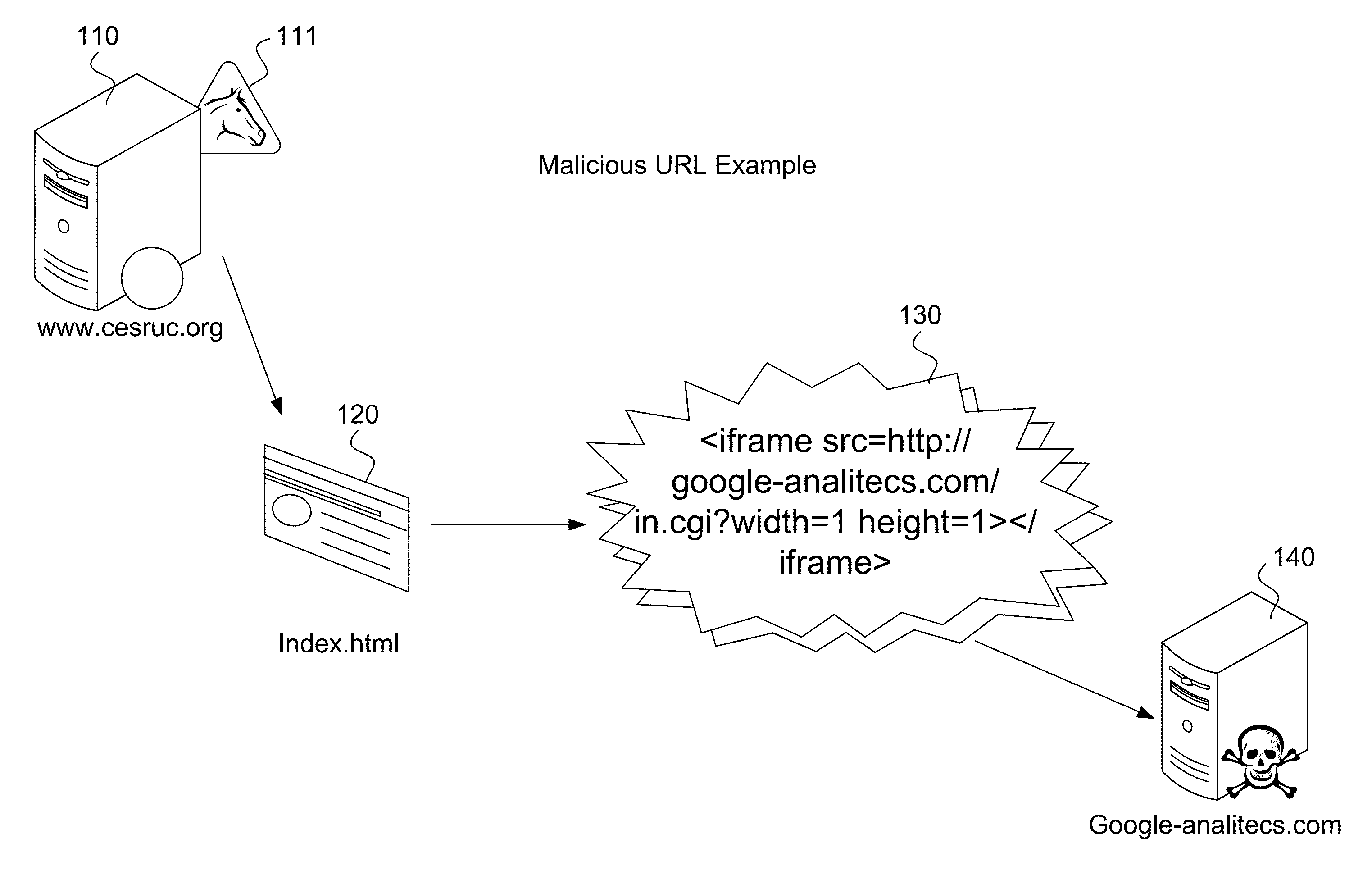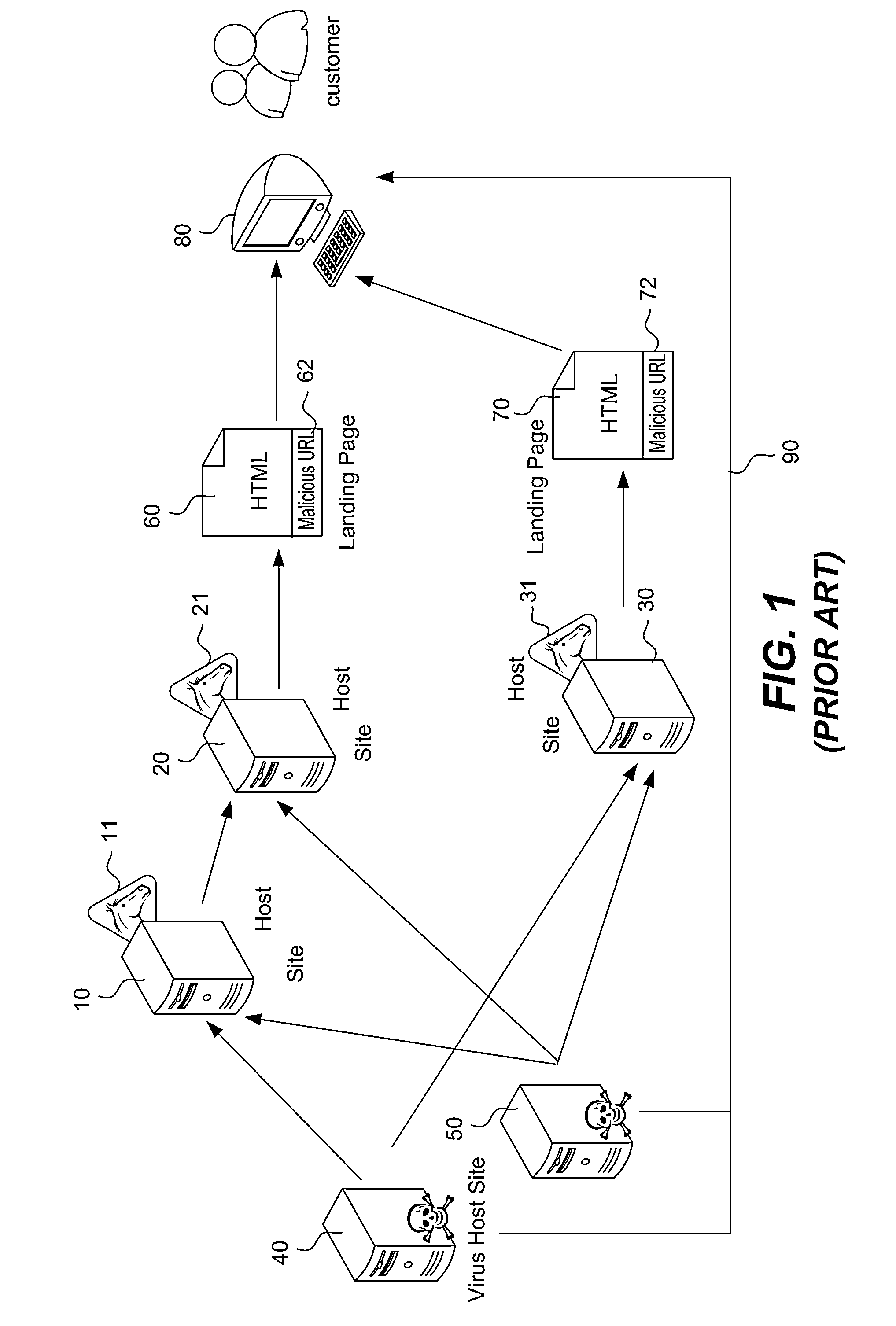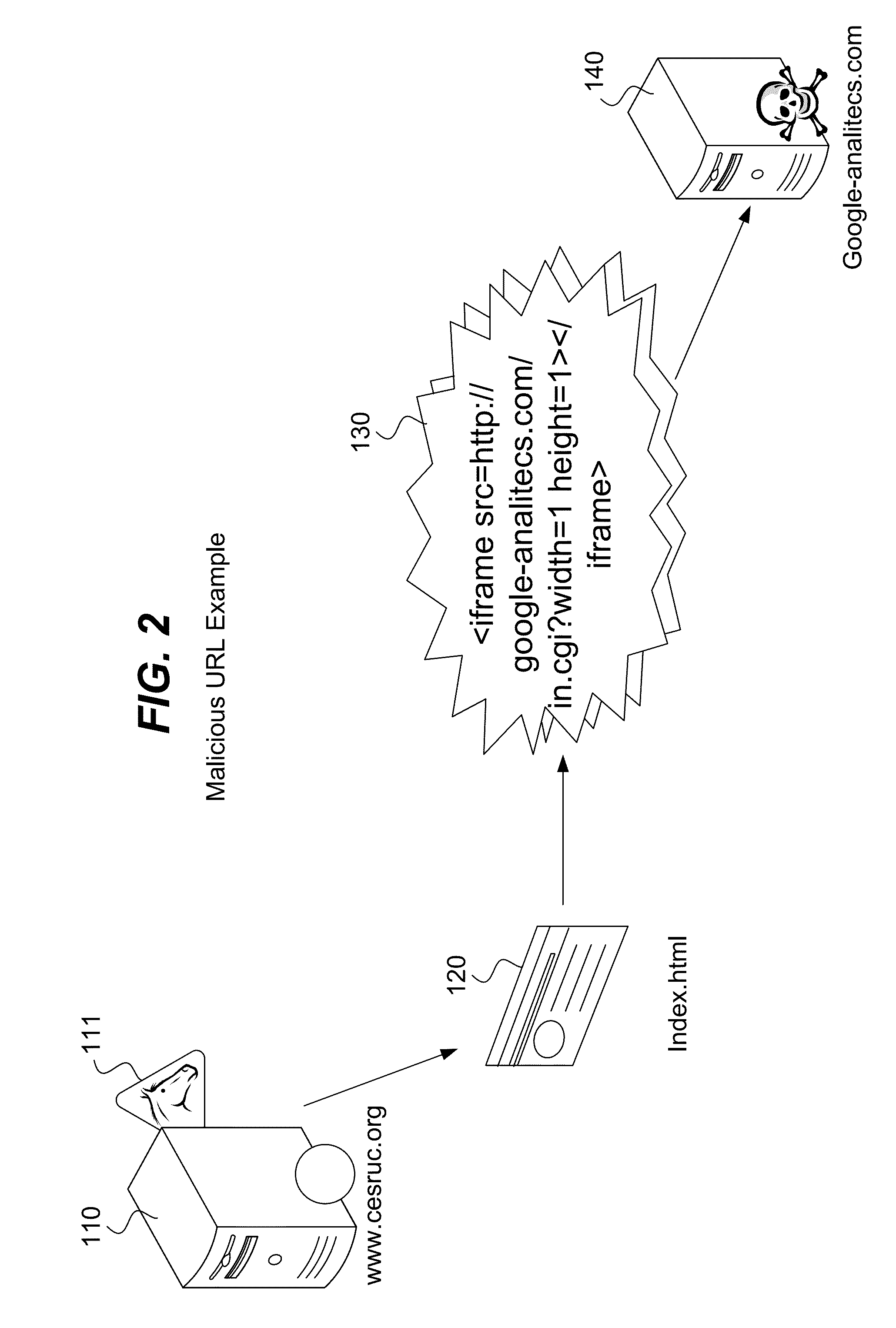Detection of malicious URLs in a web page
a malicious url and web page technology, applied in the field of malware prevention, can solve problems such as computer users, malicious software threats from the world wide web, and careful users who only visit trusted web sites
- Summary
- Abstract
- Description
- Claims
- Application Information
AI Technical Summary
Benefits of technology
Problems solved by technology
Method used
Image
Examples
Embodiment Construction
[0024]In view of the current prior art approaches that are not optimal, it has been realized through extensive analysis that the number of Web sites compromised by an injected malicious URL is on the order of hundreds of times more common than the number of malicious Web sites to which these malicious URLs link. Therefore, an approach that targets these compromised Web sites will have a dramatic impact.
[0025]It is further realized that most all malicious URLs on a legitimate Web page contain useless information except for the URL itself. Accordingly, it is realized that most all malicious URLs that have been injected into a Web page are not relevant to the page into which they have been inserted for many different reasons. In other words, the various characteristics of a malicious URL on a Web page (or of the page to which it links) are incongruous with respect to the characteristics of the Web page itself.
Malicious URL Relevancy
[0026]FIG. 2 provides an illustration of a URL that is...
PUM
 Login to View More
Login to View More Abstract
Description
Claims
Application Information
 Login to View More
Login to View More - R&D
- Intellectual Property
- Life Sciences
- Materials
- Tech Scout
- Unparalleled Data Quality
- Higher Quality Content
- 60% Fewer Hallucinations
Browse by: Latest US Patents, China's latest patents, Technical Efficacy Thesaurus, Application Domain, Technology Topic, Popular Technical Reports.
© 2025 PatSnap. All rights reserved.Legal|Privacy policy|Modern Slavery Act Transparency Statement|Sitemap|About US| Contact US: help@patsnap.com



